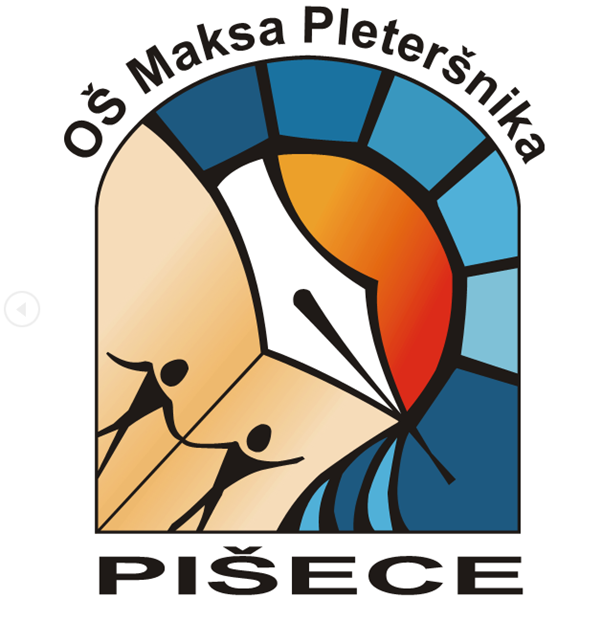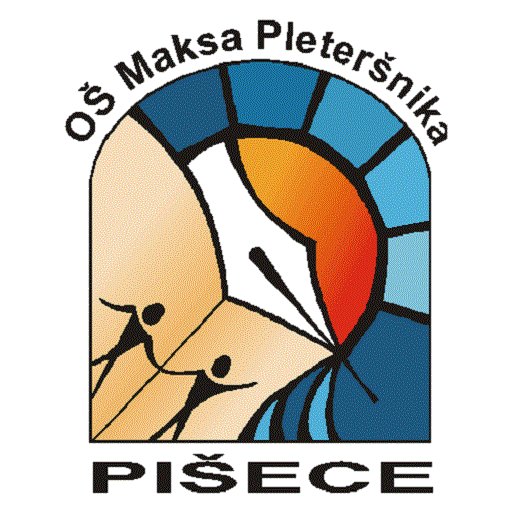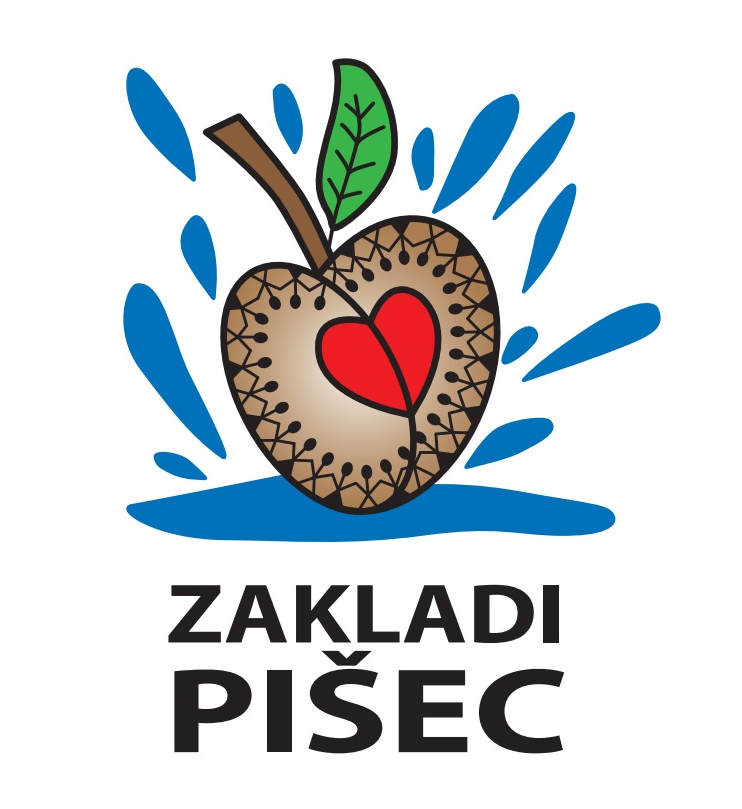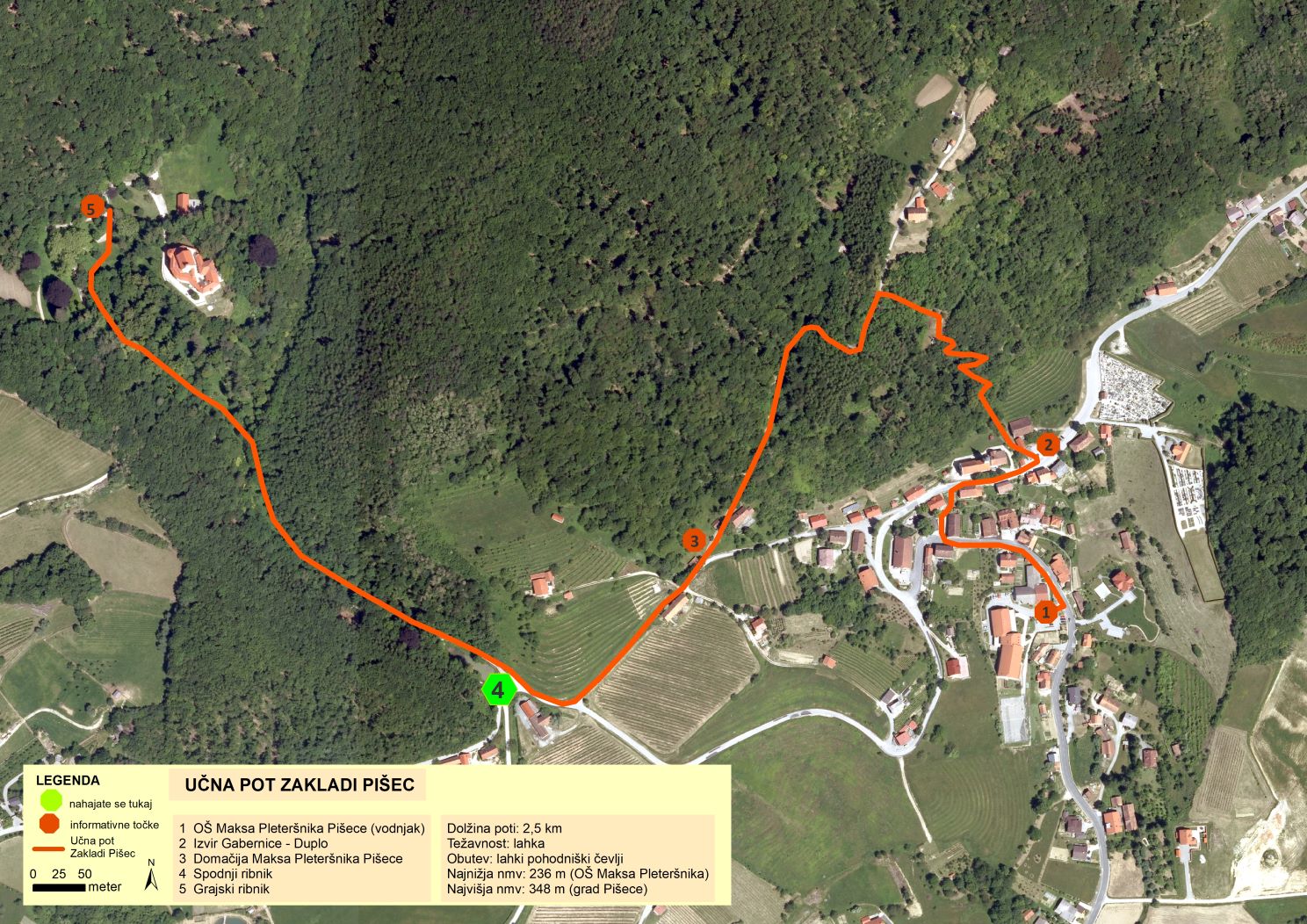From the pond to the swamp
Only if we understand, will we care.
Only if we care, will we help.
Only if we help shall all be saved. (Jane Goodall)
from the pond to the swamp
On the way from Pleteršnik’s homestead, you could enjoy the treasures of the surrounding nature, while the Knight of Pišece slowly led you to another point on our path. Here you will be able to see for yourself that nature is constantly changing. Changes are influenced by various natural phenomena: wind, water, earthquakes, etc. Hovewer, man also changes it with his interventions.
The castle pond once stood in the area where you are located. Many medieval castles had ponds very near in order to get drinking water and diversify their meals. Crabs, which were grown in the ponds, were present in our waters until the duck plague at the end of the 19th century. Among fish they had trouts, graylings, sheatfish, pikes and carps, as well as eels and lampreys.
At the place of the abandoned pond, nature took its course and slowly began to create a valuable alternative living environment for the flora and fauna – a swamp. Various water and waterside plants such as water lilies, cattails, reed beds, willows and alders can be found here.
From spring to autumn, in the company of wetland and water plants, we can see brown frogs, grass snakes and dragonflies which impress you with their flying pranks. Adult dragonflies are among the largest insects alive today and certainly among the most remarkable. Their flying abilities are unmatched by any other animals on Earth. They are insects with incomplete transformation, meaning that the adult animal hatches directly from the larva, without the pupa stage. The reproduction of dragonflies is very special. They are characterized by indirect insemination and delayed fertilization. Larvae live underwater and are voracious predators of smaller water animals.
A few steps higher, you are greeted by the castle stream, which carries stones, sand, soil and branches towards the valley. During the journey, the organic gravel decomposes and becomes food for the inhabitants of the stream. The shape of the riverbed is different after every heavy downpour, so it invites you to visit again and again.
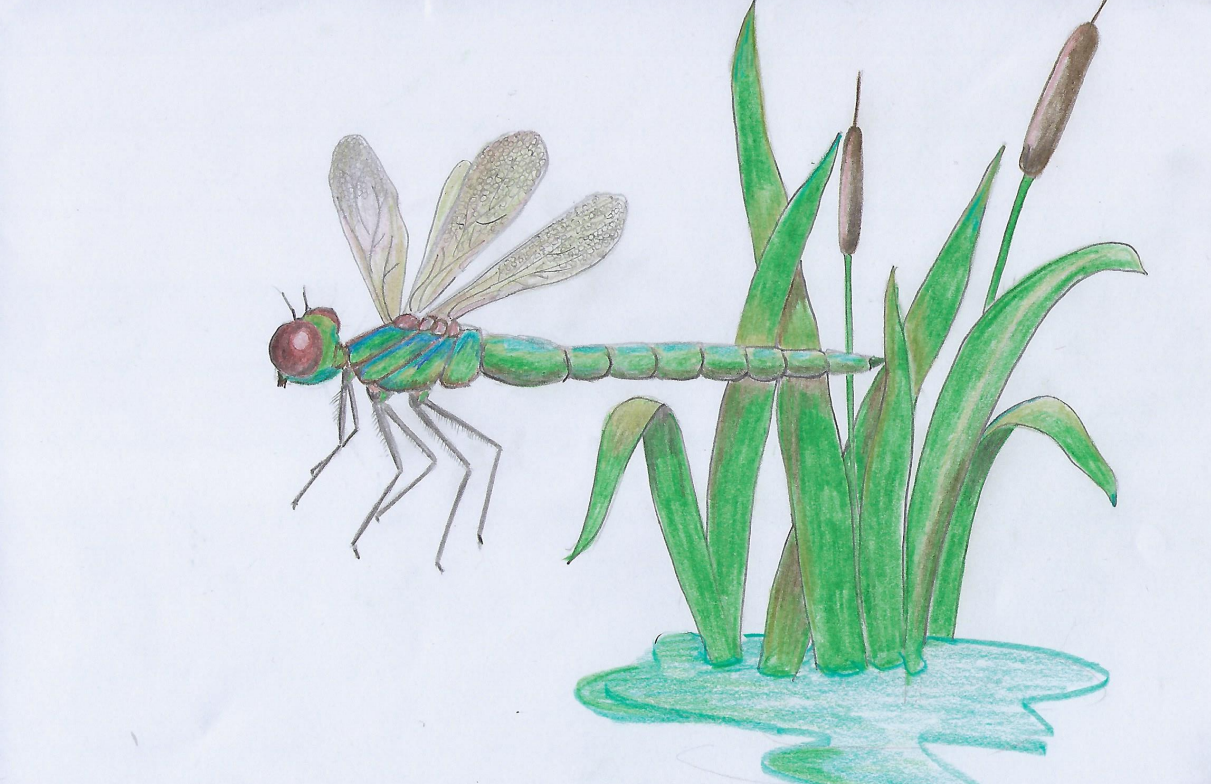
Dragonfly
Do you know?
– The best technological copy of a dragonfly that is not just a prototype is a helicopter.
– Dragonflies got their Slovenian name from the fact that they are often found near water, where snakes also hang out.
– Cattail is used in cooking. The underground parts, the white bases of the leaves and the leaf core, as well as the inflorescences and seeds, are useful. The female inflorescences are useful before maturity, they are steamed or roasted like corn.
– Frogs are also called bioindicators. Due to their thin skin, they are extremely sensitive to changes, so they react quickly to any pollution. A family of frogs in a pond means a healthy and unpolluted environment.
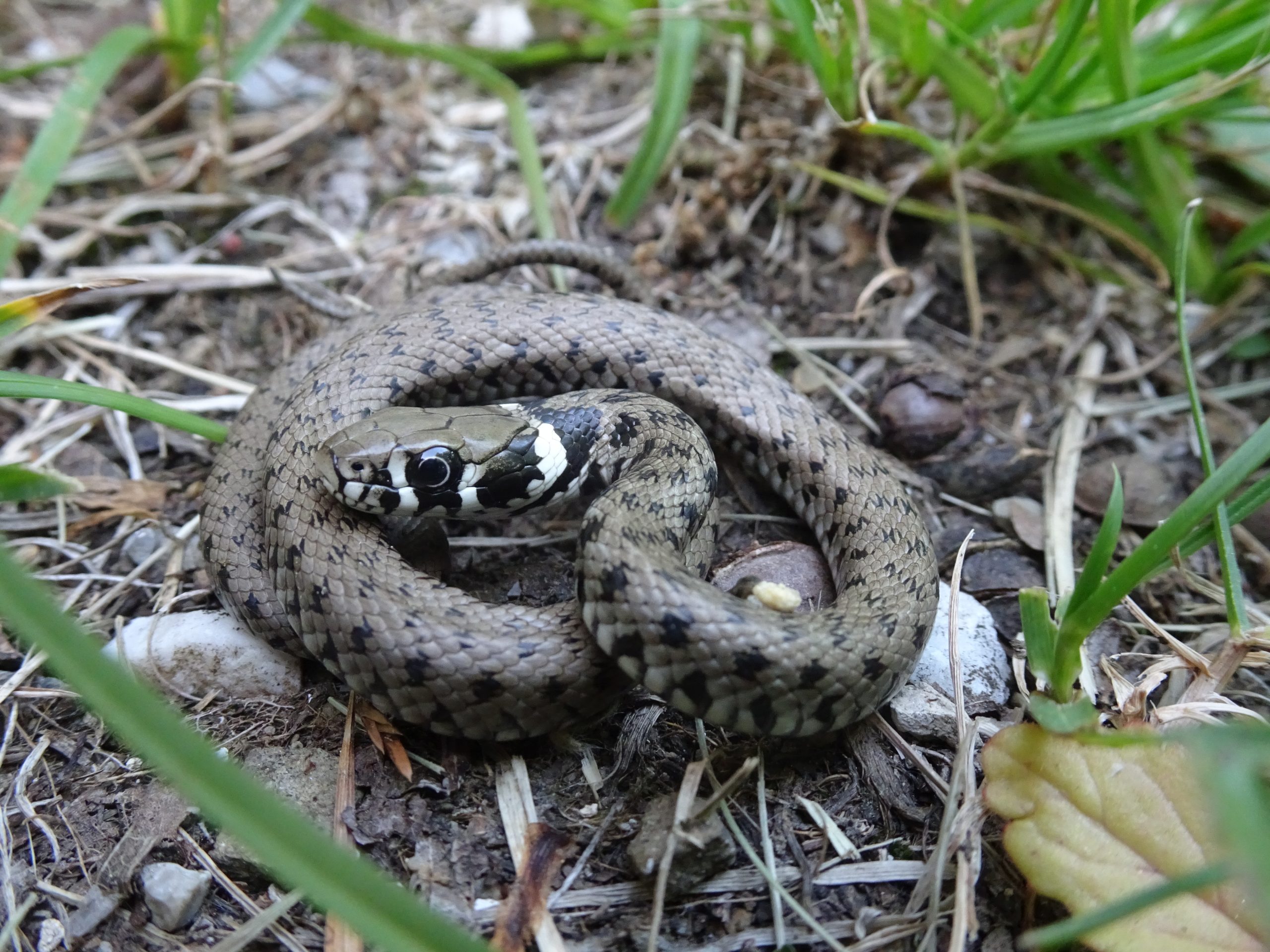
Belouška
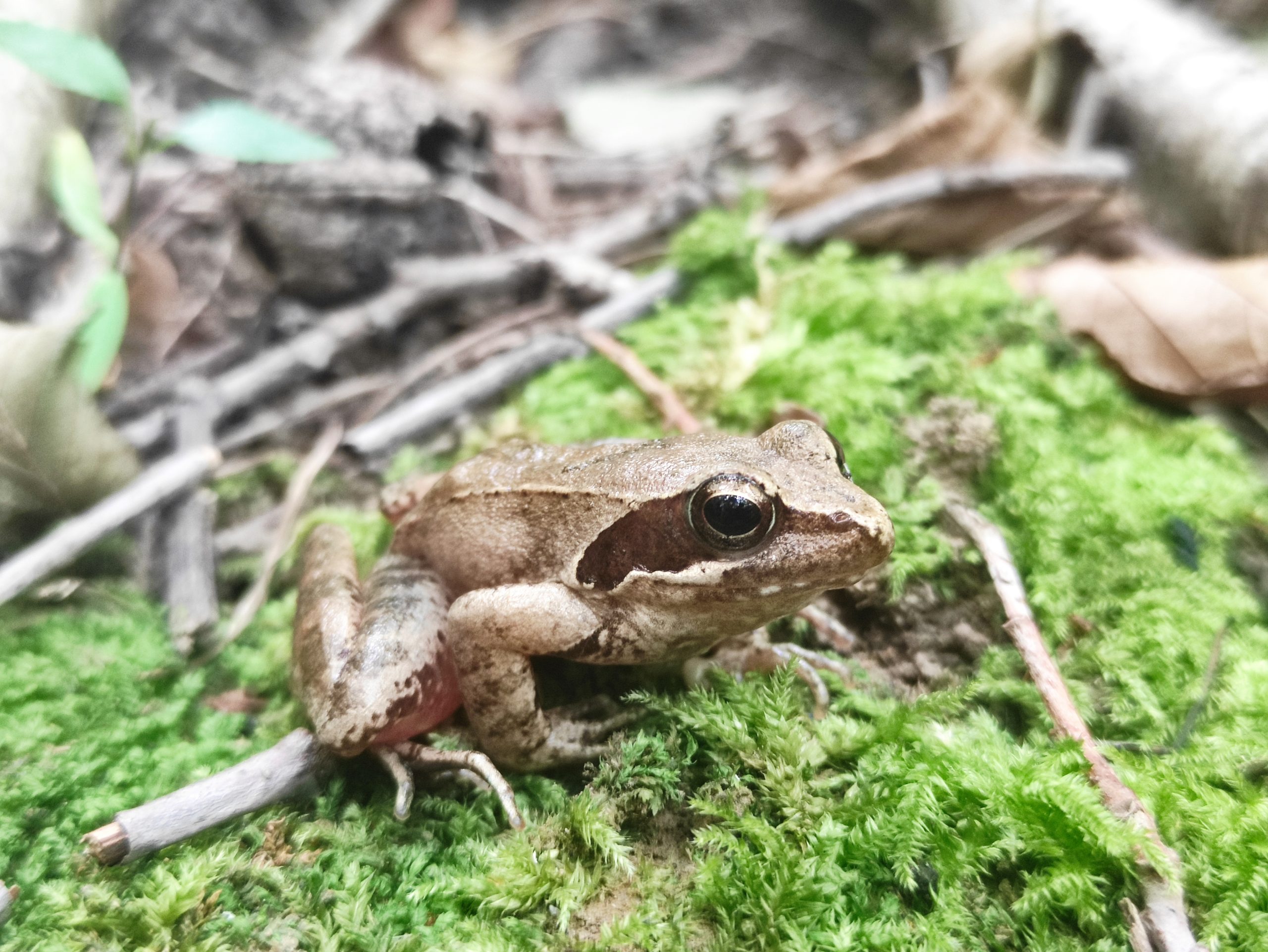
Young brown frog
challenge!
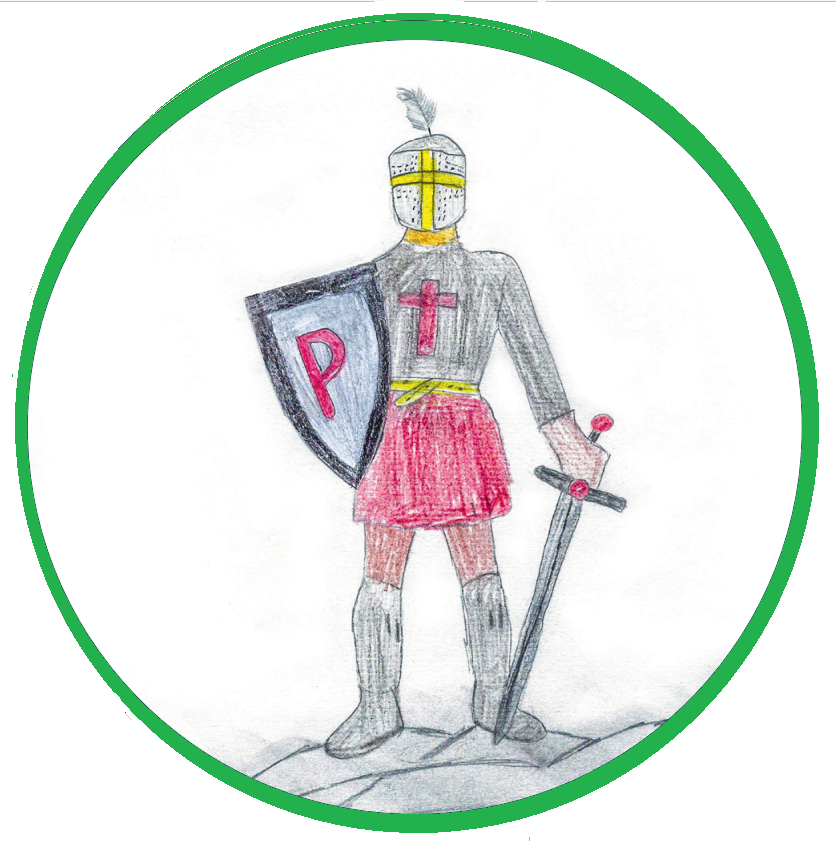
This time the Knight of Pišece takes you through the edge of the forest, which eases noise and offers protection to the plants and animals inside the forest, all the way to his home. Find natural materials along the way and use them to create your own inuk shuk. Of course, don’t forget what forest etiquette dictates.
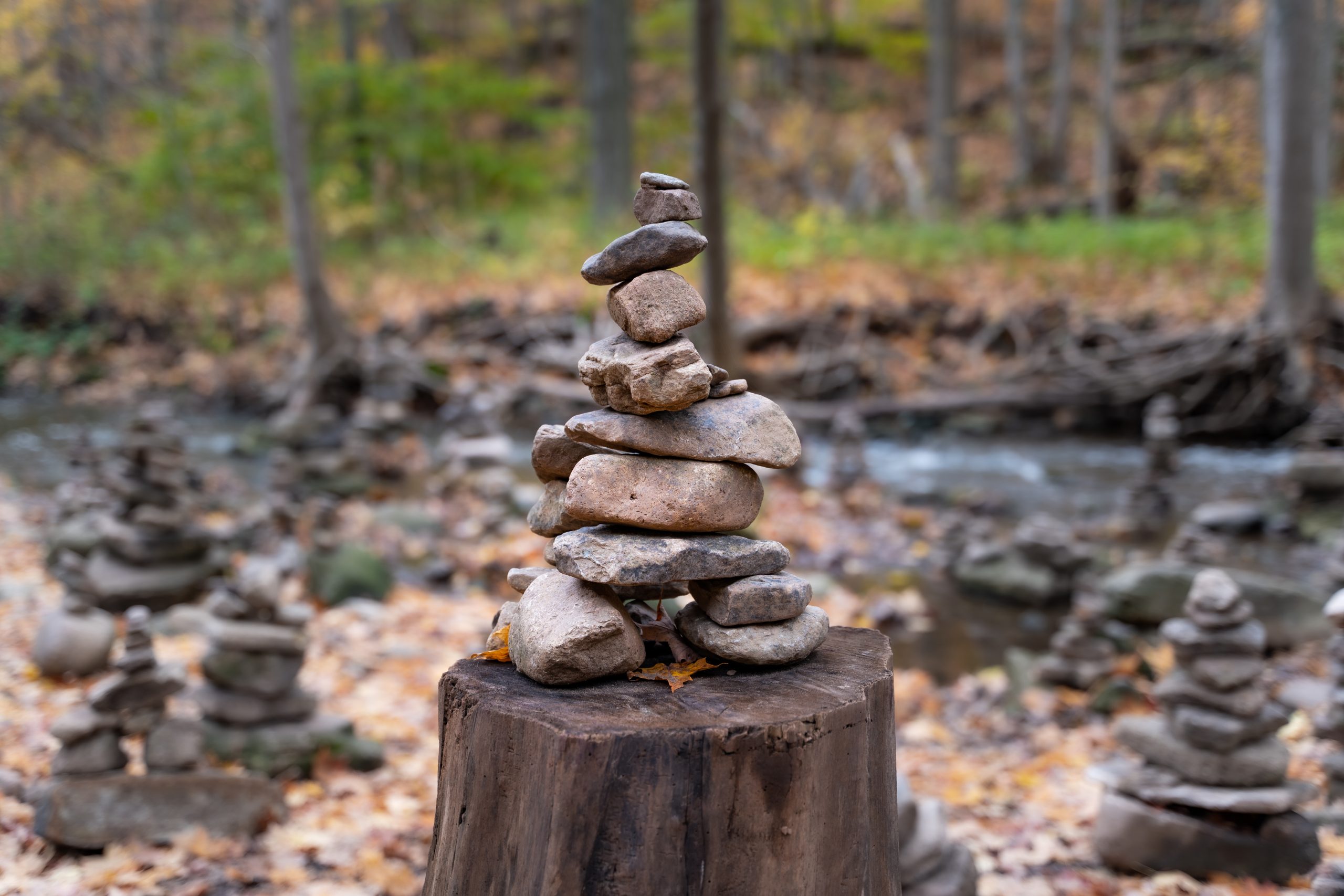
Inukshuk
